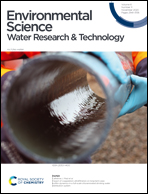Enabling wastewater treatment process automation: leveraging innovations in real-time sensing, data analysis, and online controls
Abstract
The primary mandate of wastewater treatment facilities is the limitation of pollutant discharges, however both continued tightening of permit limits and unique challenges associated with improving sustainability (i.e., resource recovery) demand innovation. Enabling increasingly sophisticated treatment processes in a cost-effective and energy-efficient way requires expanding capabilities for rapid, accurate real-time quantification of a broadened range of wastewater constituents as well as envisioning novel feedback control strategies based on these signals. This manuscript quantitatively compares results of early adoption of instrumentation and process upgrades at operating wastewater treatment facilities and proof-of-concept research results, with a focus on leveraging real-time sensing of wastewater chemistry for process monitoring and control. Up to 10% improvement in nutrient removal and energy savings are already being achieved, yet shortfalls in hardware readiness, lack of field-relevant context of research results, and a widening gap between the training of environmental engineers and the skillsets required to develop and maintain sensor-driven solutions present challenges. A forward-looking roadmap highlights opportunities for accelerating innovation, including (1) ensuring research results are published in units and context that allow operators to make an informed cost–benefit analysis with explicit comparison to existing operational baselines, (2) promoting integrated design of hardware and software to generate novel approaches for improved sensing of target analytes, (3) strengthening partnerships nationally, including for data sharing, field testing of new hardware, and expanding educational curricula, and (4) building forums for sharing of expertise and data among plant operators to enable smaller facilities to more cost-effectively collect information required to design and evaluate upgrades.



 Please wait while we load your content...
Please wait while we load your content...